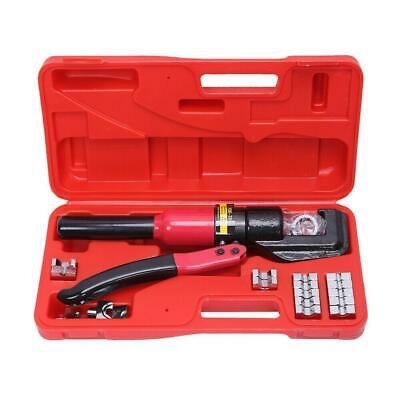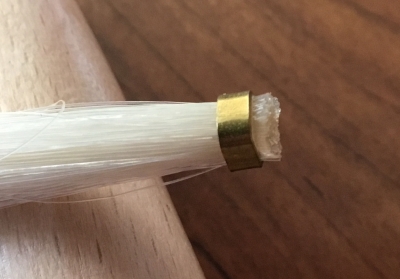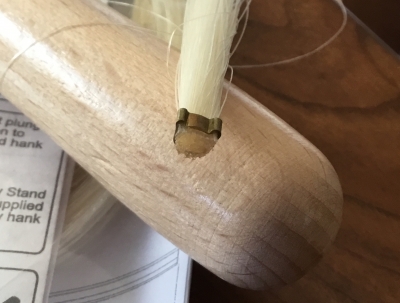Welcome to our forum. A Message To Our New and Prospective Members . Check out our Forum Rules. Lets keep this forum an enjoyable place to visit.
Currently working on errors from the latest (SimplePress) forum update. Many issues have been resoled and others are being worked on. Thank you for your patience.
 Topic RSS
Topic RSS



 (2 votes)
(2 votes) Regulars
 Offline
Offline

I just came across the P&H Bow website (it looks like they are made in India and marketed in England) and I love the technique they use for easy customer rehair. The only tool required is the button screw. It appears that they make both fibreglass and carbon fibre bows.
I wondered if any forum members use them and have any thought on them.
Success is the progressive realisation of a worthy ideal. —Earl Nightingale.
Regulars
 Offline
Offline

Success is the progressive realisation of a worthy ideal. —Earl Nightingale.
Regulars
 Offline
Offline

@Fiddlerman and others. Currently playing the viola bow on a cello, and it seems perfectly suited to that use. No clue what a brute their cello bow might be. For the interest of @bocaholly, the cloth to resin ratio is likely 50:50. It is the most responsive (admittedly cheap) carbon fiber bow I have yet tried. The unbleached white hair is not pretty, but there is a lot of it and it take rosin well. The ebony frog is well done and the combination imitation whale bone and metal wrap is attractive. Grip is imitation leather (similar to Glasser). Logo on stick looks to be simple paint transfer. The stick geometry is designed to quickly tension the hair and I think that it takes more turning torque on the button than normal (no noticed issues with button screw thread or frog nut position).
I also purchased replacement hair sets at $7 each. The manufacturer paints the tip end of hair red, but I have yet seen a difference in the ends. They must use a hot wire to cut the hair bundle ends because they are perfectly even. That must stink.
My first reverse engineering goal is to make a set of crimper dies so I can use my Harbor Freight hydraulic wire crimper to make hair sets (I plan to use corian sink stock). Then I will see how easy it is to replace the hair. It looks like a five minute job.
Success is the progressive realisation of a worthy ideal. —Earl Nightingale.
Regulars
 Offline
Offline


@Irv ... I think it's plausible, to me, that certain viola bows (guessing yours is around 70gr.) work well on cellos considering that the Arcus CELLO bows are actually only around 70 gr. too. Of course, they're built (shaped) and have the appropriate stiffness for that lower-than-average weight.
50/50 carbon-to-resin ratio sounds about right. For the record, I recall Bernd Müsing saying somewhere that basic CF bows usually have a 40/60 carbon to resin ratio. His "Müsing" line is the reverse: 60/40 carbon-to-resin. The Arcus line is 80/20 ... lots of carbon particles to line up and transmit vibrations. Sweet
Irv, I got a chuckle at the thought of having yet another element of my violin swag - your DIY bow hair changing kit - that I could order and magically hope to play better, LOL. I'd be changing my bow hair every time the weather went from rainy to nice down here 
Regulars



Thanks for sharing this Irv. That's much closer to a do-it-yourself solution. Still need to crimp it....but I'm thinking that since some shops around here charge 200 for a rehair job, if I liked the bow I might just buy those refills. It seems they are one of the few companies that realize not everyone is only a few miles from a repair shop and have actively found a solution.
Here's something else you might find interesting. I have one of these and it does ok for what it is. Very light weight. Hair NEVER needs changing. You could drop in a puddle of water and once dry could play with it again. Unaffected by humidity.
Regulars
 Offline
Offline

@starise and others. I think that you have misread the thread. The P&H bow is intended for home rehair. The only tool needed is the frog button. The company sells new hanks of hair with installed clip ends for about $7.
I only brought up the design of the hair end ferrules because I want to use the technology for rehairing other bows (the traditional method of wrapping with string is tedious).
I am aware of the incredibow. I would like to try one but have not found one cheap enough to warrant experimentation and do not feel like spending $150 on something with nylon hair.
Success is the progressive realisation of a worthy ideal. —Earl Nightingale.
Regulars
 Offline
Offline

I provided a picture of the tool I plan to use (with a diy set of dies) to achieve the required horse hair crimps. Each string instrument will likely require its own set of dies. The tool utilizes a few ounces of hydraulic fluid to exert quite a bit of force on the jaws. A nice bit of kit for about $30.
Success is the progressive realisation of a worthy ideal. —Earl Nightingale.
Regulars



Irv said
@starise and others. I think that you have misread the thread. The P&H bow is intended for home rehair. The only tool needed is the frog button. The company sells new hanks of hair with installed clip ends for about $7.I only brought up the design of the hair end ferrules because I want to use the technology for rehairing other bows (the traditional method of wrapping with string is tedious).
I am aware of the incredibow. I would like to try one but have not found one cheap enough to warrant experimentation and do not feel like spending $150 on something with nylon hair.
I think it's just the way I worded my reply that seemed I didn't understand. I understood that a person doesn't need to have a special jig to rehair that bow.
However IF the goal is a total at home re hair solution, then your idea to use the press should do it. The only thing you need is horse hair, a similar crimp and the little press tool.
I'm not sure I'm ready to go that far yet. I think I would initially be content to try the bow out, see if I liked it and then probably just buy the re hair from them. Still miles better than doing things the old way. Kudos to you for trying new things!
I checked out the links at the P&H site for US. They had two contacts. Neither one led to a link to even see what they cost. Apparently the marketing for those over here tanked in some way.
Regulars
 Offline
Offline

A couple of added details. The company advises the use of a comb to ensure that the hair is not crossed between the end cleats before installation.
A mechanism for securing the hair into the bow is patented (USA 4040322 and U.K. 1524958).
Success is the progressive realisation of a worthy ideal. —Earl Nightingale.
Regulars


@Irv -
Besides the crimp, is any other retention method used in parallel such as re-flowed resin or heating the hair? I'd be keen to assess the strain performance of a crimp-only end, compared with a conventional cord seizing, both with and without the extra retention measures.
With regard to tooling for the crimps: check out the second-hand tool stores and similar places in your area for old crimp tools; you may find a few pairs with likely die size / type 'going for a song'. Making your own dies for the hydraulic set is a big project; the heat treatments alone are quite complex if the dies are to be tough enough.
Another concern which I have is clearance of the crimp into the frog and tip mortices. The cord seizing is very svelte in profile compared with a piece of crimped copper tubing. When I make mine up, I mould the end to shape (the knot and ends are the problem) while the resin is still flexible. Decades of seamanship and electronic crafts have given me an edge here.
I wish you good luck with this latest venture and look forward to your reports.
Peter
"It is vain to do with more that which can be done with less" - William of Ockham
"A crown is merely a hat that lets the rain in" - Frederick the Great
Regulars
 Offline
Offline

I am going to wing two birds with one post. Here goes.
@starise, I sent you an pm regarding where I got mine. Good luck.
@peter . It looks to me that the hair is cut about 3 mm beyond the crimp (likely with a hot wire) and the horse hair hank version is fused with what looks to be ca glue.
The patent refers to the use of pvc containing monofilament that they found to have similar rosin holding characteristics to horse hair. I procured three specimens of this product for a violin. It looks like the ends are heated in a cylindrical die and compressed into a fused button. The process is likely similar to that used to butt weld polypropylene water main pipe. The patent has a diagram but no description for this.
I took dimensions of the crimp and it looks like a #4 AWG is a close approximation for the lower portion. I could likely form the upper indent section by silver soldering a small steel rectangle on the other half of the die. My approximation of the copper tube wall thickness is 0.6 mm, so I do not think that complex metallurgy is required to create an acceptable die for this. I have been wrong before.
I have no doubt regarding your seamanship but the crimp is likely to have a more svelte mortise profile due to the amount of compression obtained by the press. Hank length accuracy is also likely better if a jig was created to provide a consistent stretch while the hair is clinched.
I approximated the diameter of the crimp at 1/4” diameter (which makes sense as the originators were English engineers). Standard refrigeration tubing of that diameter has a thickness of 0.030” . K&S item #8131 is 1/4” diameter brass tubing with a wall thickness of 0.014”. I am going to try that first.
Success is the progressive realisation of a worthy ideal. —Earl Nightingale.
Regulars


Irv said
...My approximation of the copper tube wall thickness is 0.6 mm, so I do not think that complex metallurgy is required to create an acceptable die for this. I have been wrong before.
...
There may be some flash extruded between the die sections, and unless the dies cover the entire length of the crimp barrel the remainder may flare out.
Will you be favouring the playing face of the hair bundle away from the indented side of the crimp, to mitigate the crushing? Perhaps fine-tuning the angle of same toward the playing edge? This presumes an asymmetrical crimp; using a hexagonal die set would not offer this feature unless you include it in your silver soldered die prostheses.
Peter
"It is vain to do with more that which can be done with less" - William of Ockham
"A crown is merely a hat that lets the rain in" - Frederick the Great
Regulars
 Offline
Offline

@peter et al. Per provided photos in the thread above, it appears that there is no extant “flash” from the die set. The measured width of the crimp is 2.5 mm. The measured width of my die set is 10 mm.
My faulty color vision skewed my previous comments (which I will edit). The instructions clearly state that the red dot (side of crimp opposite of indent) faces forward on tip and faces backward on frog. My wife pointed out the dots.
Success is the progressive realisation of a worthy ideal. —Earl Nightingale.
Regulars
 Offline
Offline

I had a thought this morning regarding the brass tubing crimps. The horse hair would not take kindly to any edge burrs. I will not be able to hold the thin sections of tube for a conventional debur. A rock polisher would do the job.
Success is the progressive realisation of a worthy ideal. —Earl Nightingale.
Regulars


You could also flare the inner edges of the tubing, perhaps with a conical punch. Rumbling for a few hours with steel balls (like unto a rock polisher) would indeed do a good job, and impart a fine matt finish. One of my bows has a brass shim speader in the frog as a replacement for the usual wooden item. It works well, and I have no consequent hair loss (not from the bow, anyway...).
Peter
"It is vain to do with more that which can be done with less" - William of Ockham
"A crown is merely a hat that lets the rain in" - Frederick the Great
Member
 Offline
Offlinecould you please by any chance recommend a good bow? I'm choosing between these
https://primesound.org/best-violin-bow/
or should I look for something else?


 Log In
Log In Register
Register



























